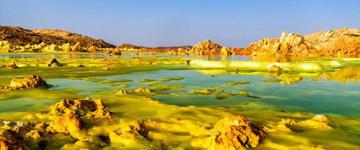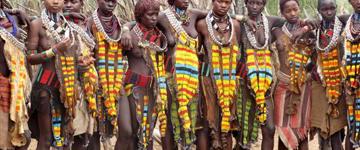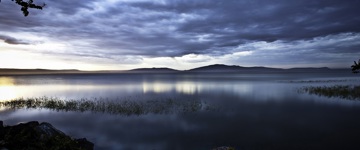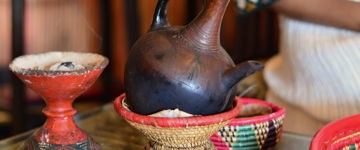Gambela National Park
One of Ethiopia's least developed parks and receiving few visitors, Gambella National Park is located on the Akobo River system. It was originally created for the protection of the extensive swamp habitat and the wildlife there.
The park is 5,060 square kilometers (1,954 square miles) in area, and its altitude ranges between 400 and 768 meters (1,312 and 2,519 feet). Rainfall is 1,500 mm (58.5 inches) a year, falling between April and October. Temperatures are high. The vegetation here is mainly grassland and Terminalia /Combretum wooded grassland, with extensive areas of swamp. Malaria is a problem and precautions must be taken.
The park contains faorty-one species, many representative of neighboring Sudan and not found elsewhere in Ethiopia, such as Nile lechwe and the white-eared Kob, the latter migrating in the large numbers.
Facts
Gambella National Park is located 850 km west of Addis Ababa. It was established as a protected area in 1973 to conserve a diverse assemblage of wildlife and unique habitats. The park area is home to the Nuer and the Anuak people. Both sexes of the Nuer favor cicatrisation, an adornment causing bumps in various patterns on their bodies. Originally the park was created for protection of extensive swamp habitat and ts wildlife. Located on the Akobo river system it hosts several wildlife not found elsewhere in Ethiopia. These include the nile lechwe and white-eared kob. The banks of the baro are rich in birdlife and thus give visitors an extra advantage. With its total area of approximately 50,600 ha, if it is the largest protected area in the country. Its northern boundary is formed by the Baro River. To the south of the park, the Gilo River flows from Gog to Tor in a northwesterly direction. The landscape of Gambella is low and flat with altitude ranging from 400 to 768 masl. The average altitude is around 500 masl. The park is located in the centre of Gambella Regional state between the rivers of Baro and Gilo, Abobo is 82 km south of Gambella town on the river Baro Agro-climatically, it is classified as Kolla and the climate is hot and humid High temperatures are recorded just before the onset of rains in May. Annual mean temperature is with a minimum and maximum of 20.4 and 34.8 0 C, respectively. Annual rainfall is estimated to around 1400 mm in the plains. The west season extends from May to October while the dry persists from November to April. Gambella is a vast collection of savannahs, flood plains, reverine forests,lazily flowing rivers and grasslands. The general landscape is flat but it has area of raised ground that supports deciduous woodlands and grasslands. Extensive areas covered by grasslands are inundated by water forming valuable seasonal wetlands in the rainy season. There are however extensive areas of permanently inundated wetlands especially near rivers. Grasses have lush growth and there are species which can reach 2-3 meters in height. Other important habitats include the river edges and their cut-off lakes. Gambella teems with a wide variety of wildlife and 41 larger mammals have been recorded here. The most common are Buffalo, Giraffe,Taing (Topi), Waterbuck, Roan Antelope, White-eared Kob, Nile Lechwe, Burchell’s Zebra, Bushbuck, Reedbuck, Warthog and Elephant. The rivers host healthy populations of Hippopotamus and Nile Crocodiles. The park has at least 300 bird species of which 11 are Sudan-Guinea Biome species. Nile perch weighing up to 100 kg have been caught from the Baro River. Besides these an unknown number of fish, amphibian and reptile species are expected from this region.
Unique features
Gambella has a diverse set of Wildlife,Which the country shares with neighboring countries. Vast collections of plain games are observed and could arguably be one of the best wildlife areas of the country. Major wildlife conserved includes white-eared Kob, Nile Lechwe, Roan Antelope, Topi and Elephant. The near threatened Shoebill and Basra Reed Warbler have been recorded from here back in the 1960s. The area holds 11 Sudan-Guinea Biome species holding 69% of Ethiopia’s total assemblage for this category.
The park area is home to the Nuer and the Anuak people. Both sexes of the Nuer favor cicatrisation, an adornment causing bumps in various patterns on their bodies. It is about 5060 sq.km in area. Originally the park was created for protection of extensive swamp habitat and ts wildlife. Located on the Akobo river system it hosts several wildlife not found elsewhere in Ethiopia. These include the nile lechwe and white-eared kob. The banks of the baro are rich in birdlife and thus give visitors an extra advantage.



